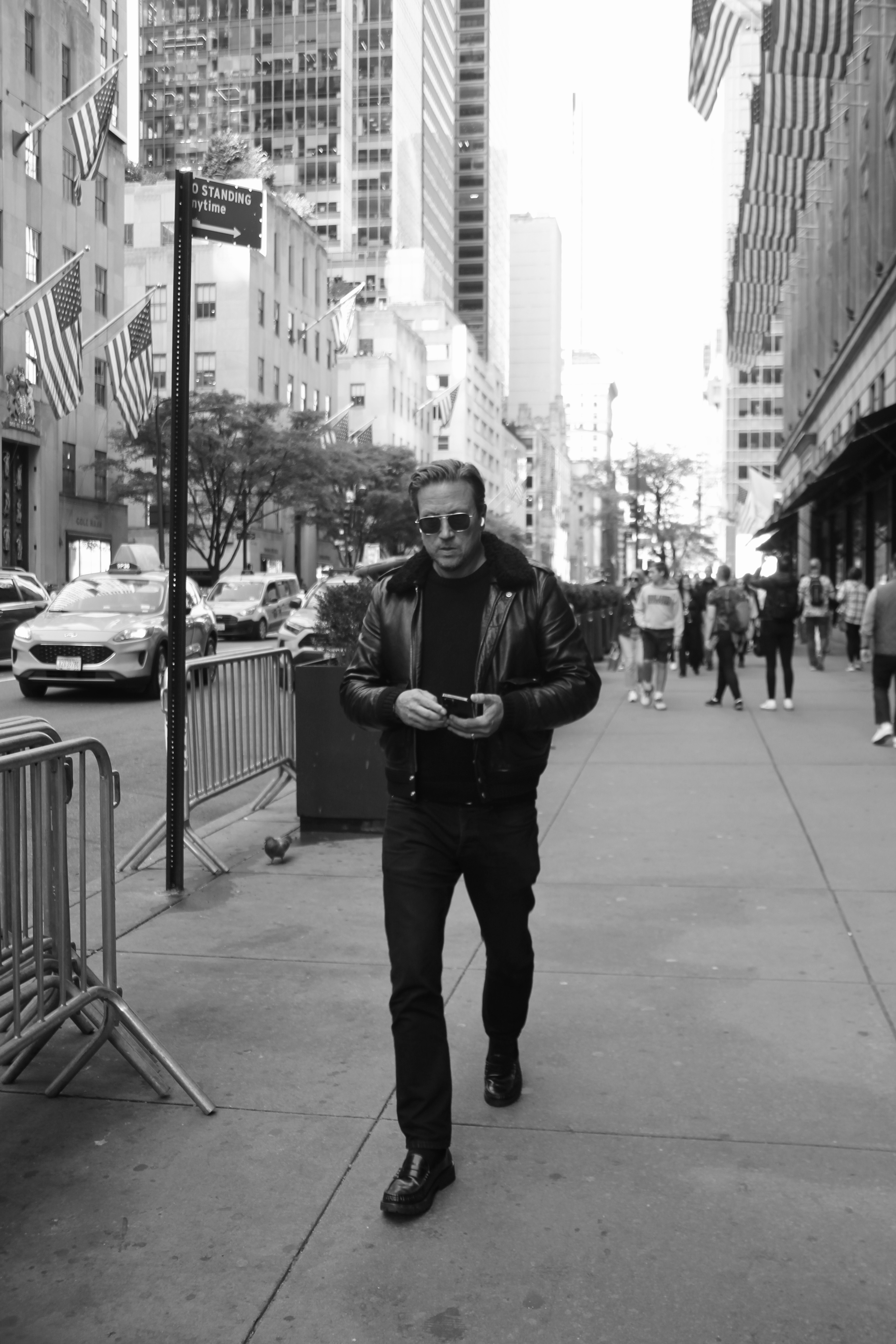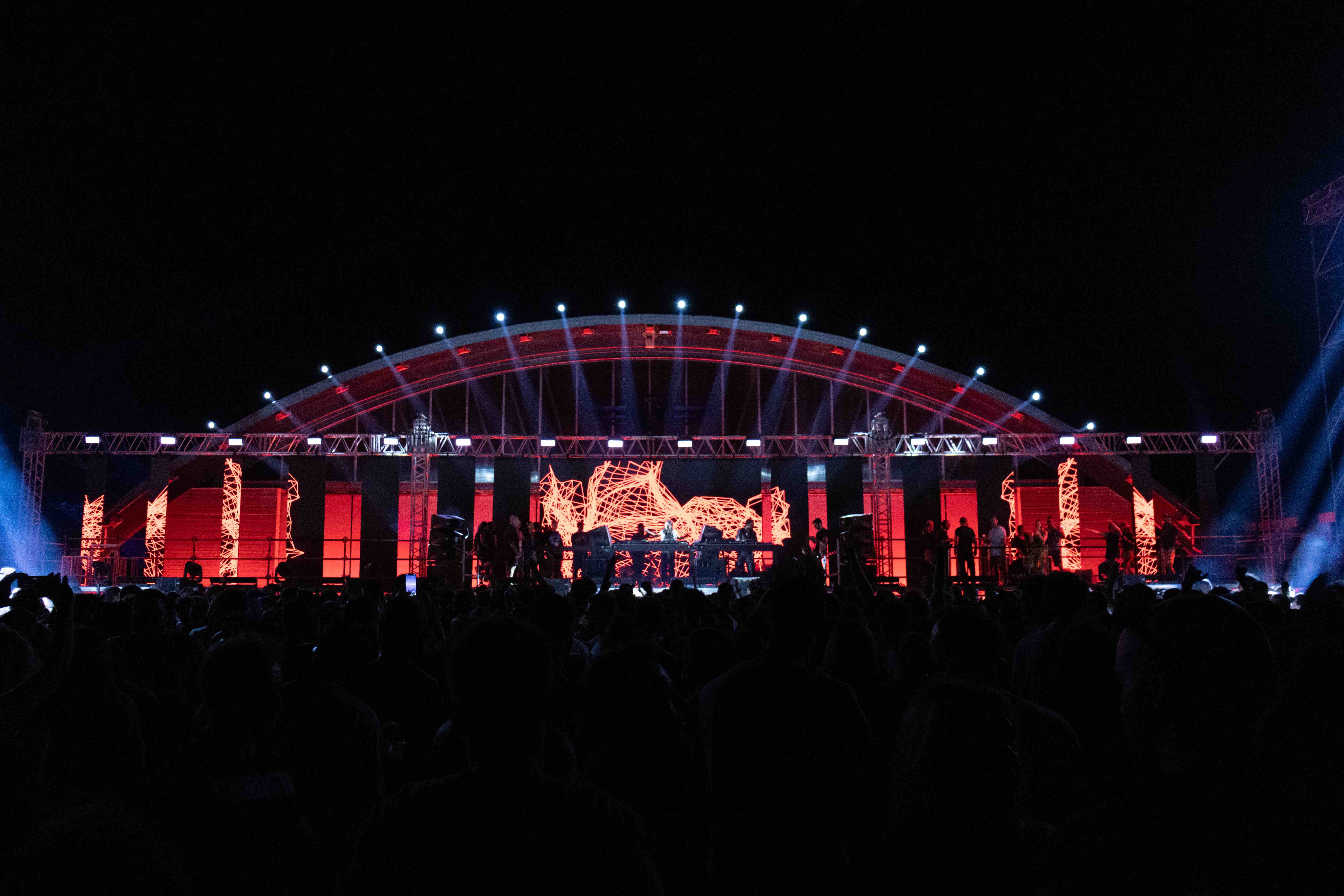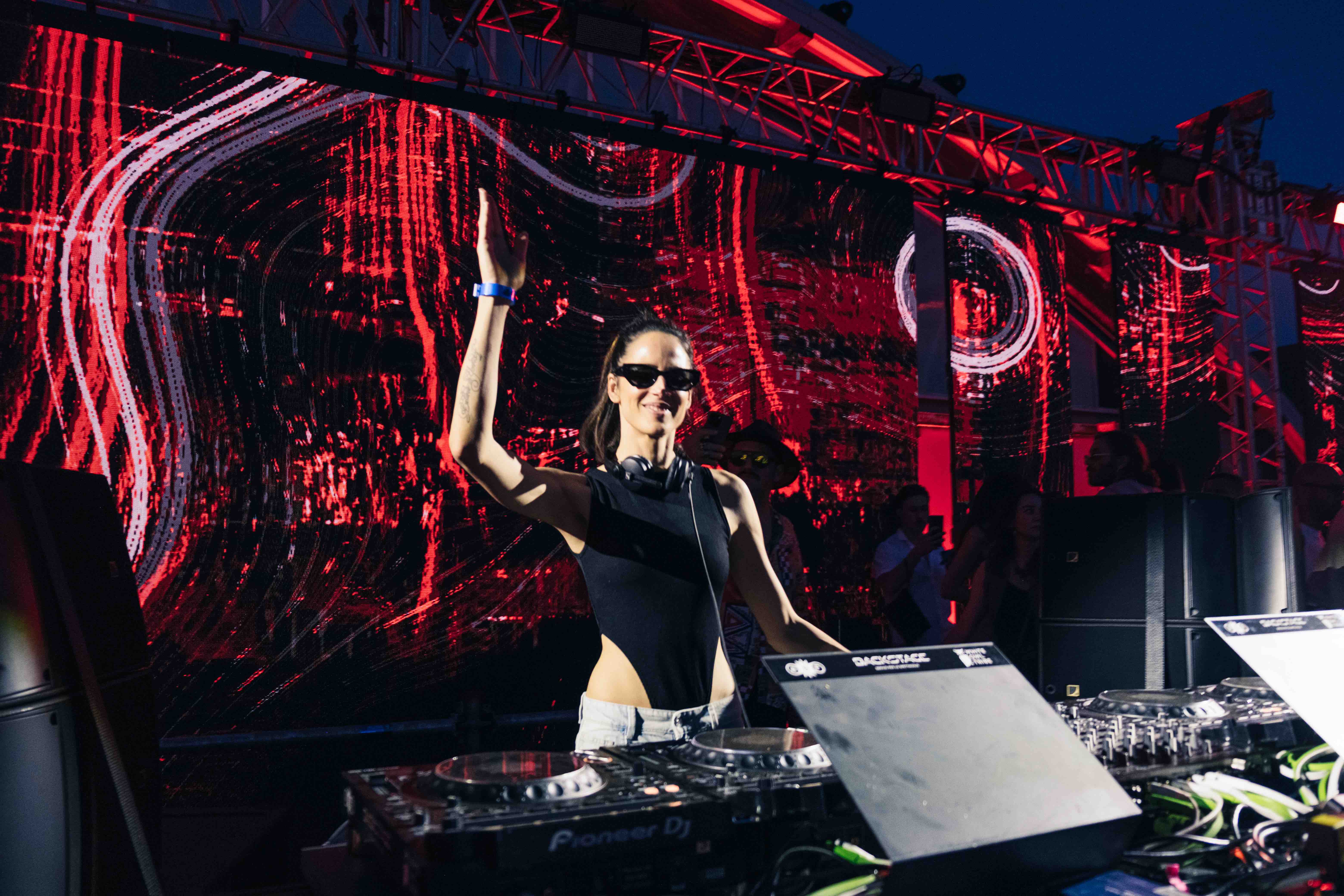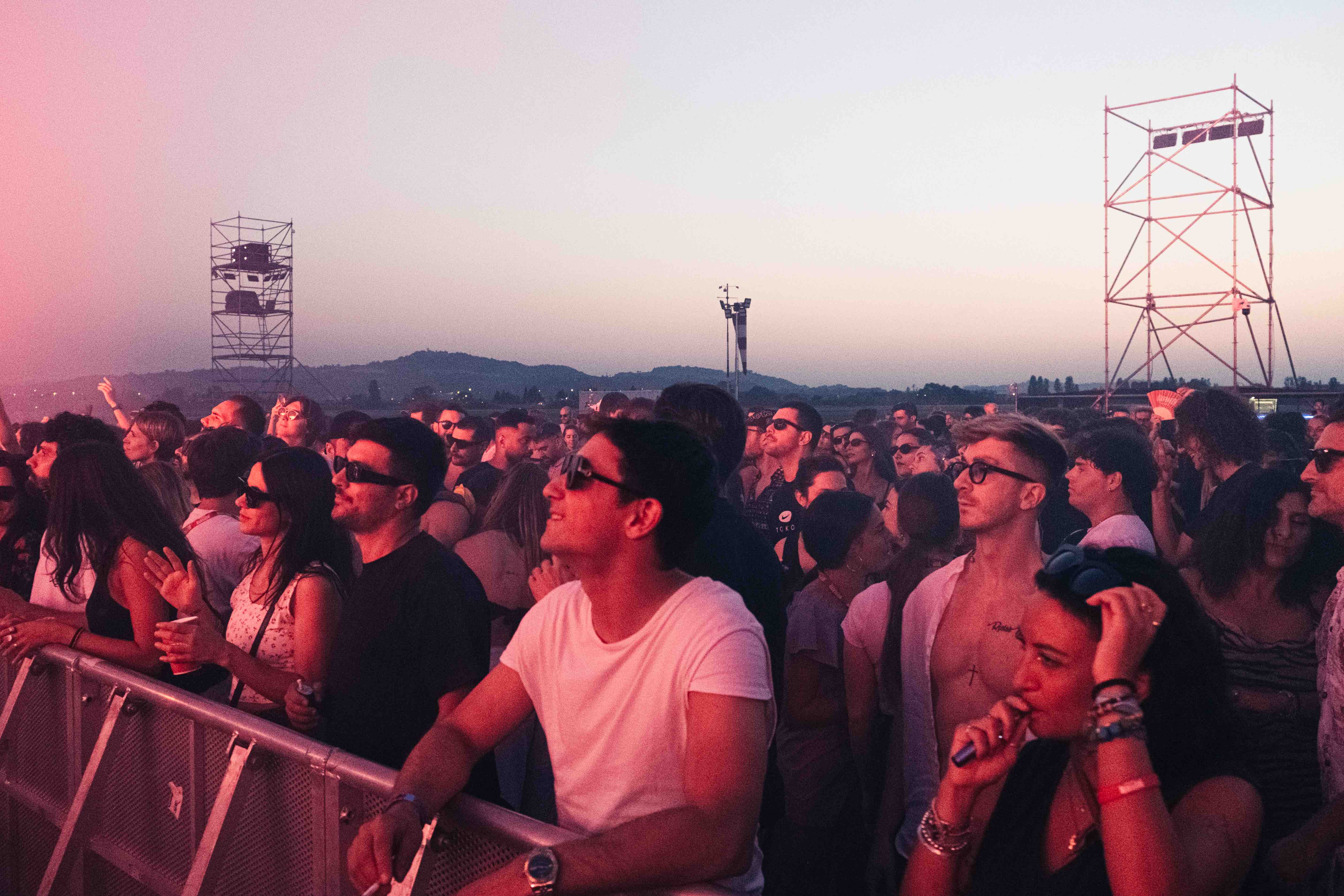F L A U N T


The Adriatic Sound Festival isn’t just hot on the heels of Europe’s electronic scene—it’s actively recalibrating it. Launched on Italy’s coastline earlier this year, what could have been another addition to Europe’s electronic calendar arrived instead as a study in atmosphere: a world where architecture met basslines and the air itself seemed to move in sync with sound. Now, as it prepares for its second edition, it’s adding a new name to its rhythm: Brant Cryder.
Cryder—President and CEO of Yves Saint Laurent, Americas—joins the festival’s board of directors, bringing with him decades of luxury-world precision and, perhaps less expectedly, the ear of a seasoned DJ. His appointment blurs a few boundaries, but that’s exactly the point. The Adriatic Sound Festival has never been about confinement. It’s about the space between—the moment where music and fashion stop orbiting each other and finally collide, as they were always meant to.

For Luca Lewis, the festival’s founder, this partnership is a fitting alignment. Both couture and club culture are built on the same raw material: emotion. The details matter: texture, atmosphere, the way something makes you feel before you even name it. With Cryder now shaping its evolution, the Adriatic Sound Festival cements itself as more than a weekend escape—it’s a living archive of how culture sounds when luxury finally lets go.
It’s a fitting alignment. In both couture and club culture, the details matter: texture, atmosphere, the way something makes you feel before you even name it. With Cryder now shaping its evolution, the Adriatic Sound Festival cements itself as more than a weekend escape—it’s a living archive of how culture sounds when luxury finally lets go.
See below, FLAUNT’s conversation with Brant Cryder and Luca Lewis about emotion as experience, the rhythm of refinement, and how sound might just be the most luxurious material of them all.

A partnership between a luxury fashion and an electronic music festival is, on the surface, quite unexpected or unconventional—but maybe that’s its superpower. What do you see as the synergy between those two worlds?
Brant: At first glance, they seem like opposites, couture and clubs, refinement and rebellion. But the deeper truth is that both are built on emotion. Fashion designs a feeling you can wear; music designs a feeling you can live inside. Both move energy and shape identity. When those two forces meet, something powerful happens, beauty gains rhythm, and rhythm gains form. It is elegance with a pulse. That’s the real synergy: emotion turned into experience. I think that the future of culture lives in those collisions, where art, energy, and human connection overlap.
Luca: The synergy between fashion and music is about emotion and storytelling. Both shape how people express themselves, how they move, and how they connect. When they meet, they create something powerful and lasting. Brant brings great experience to us from his past roles to now at Saint Laurent, a brand I’ve always admired for its timeless elegance. It’s strange how life works sometimes, Saint Laurent was one of the brands that inspired the creative direction of ASF, and then I met Brant. From that moment, I knew we had to work together because he would understand the vision completely.
The festival only entering its second year makes it fairly young—Brant, what potential did you recognize that drew you into being a part of its future?
Brant: What drew me in was the intention. Luca and his father, Robert, have a rare vision, a deep respect for craft, sound, and place. There’s honesty in how they’re building this. You can feel the care in every detail, from the production quality to the sound and the architecture of the experience. And then there’s the setting, that ancient stone venue right on the Adriatic Sea. It’s not just beautiful—it’s alive. There’s something sacred about bringing modern sound into such a timeless space. It becomes a kind of cultural portal, where history and future meet on the water. The potential here is to build something elegant and alive, like an elevated European version of Burning Man, but rooted in culture, connection, and beauty. That’s what pulled me in; it feels pure and intentional.

Fashion and electronic music have kindred spirits of performance, rebellion, expression, and identity—how do you see those concepts merging within a festival context?
Brant: They’re both expressions of freedom. Fashion gives shape to individuality—music gives it movement. Both are about emotion and courage, the willingness to express who you are. A festival is like a living runway. Everyone there is communicating through sound, color, rhythm, and style. It’s a human connection in motion. That’s what makes these worlds merge so naturally; performance becomes participation.
The regular person might have no idea that behind the corporate leadership front, you have an extensive creative history as a DJ yourself. How does that artistic side of you complement the work you do as a CEO and vice versa? Do you find similarities in terms of rhythm, emotion, or storytelling?
Brant: I’ve always seen a deep connection between creativity and leadership. DJing taught me to listen, to feel the room, read the energy, and know when to build or when to let something breathe. It’s intuition, timing, rhythm, the same instincts I rely on to lead teams and guide culture. Both roles require presence. You’re creating flow, aligning people around a shared energy. Whether it’s through sound or strategy, the goal is the same: to move people emotionally and collectively forward.

In today’s landscape, luxury feels less about objects and more about experience. Do you see festivals like this as part of that transformation—a new kind of luxury rooted in energy and immersion?
Brant: Completely. The new luxury is presence. It’s the ability to be fully alive in a moment that can’t be repeated. It’s energy, not excess. Festivals like this represent that evolution, from ownership to emotion, from product to experience. Luxury now lives in memory, in the shared feeling of being part of something real. It’s less about what you have and more about what you feel. That’s the transformation I see happening everywhere.
Luca: This generation is seeking experiences that feel real, moments that connect emotion, creativity, and community. That’s the kind of luxury people are looking for now. When we bring people into ASF, we want them to see the full picture, the art, the sound, the atmosphere, the storytelling. Brant sees it fully. He understands how to build something that lasts, something timeless, and that’s exactly what we’re creating together.

When thinking about the YSL universe, is there a particular sonic atmosphere that comes to mind—a soundtrack of sorts—that you imagine complements the brand’s attitude?
Brant: While I’m not speaking here on behalf of the brand, I’ve always felt that the world has a sound, a cinematic, nocturnal, magnetic quality. It’s Paris at midnight: leather on concrete, neon on rain, elegance with edge. There is tension, confidence, and rhythm. That kind of sonic atmosphere mirrors the spirit of modern luxury, refined but alive. It’s restraint and rebellion in the same heartbeat.
Luca: With ASF it would sound timeless, what I like to call the “Three Pillars of Sound”: Past, Present and Future. The Roman Empire now meets futuristic aviation, Adriatic waves meet architecture. Something that feels alive, but eternal.
How would you describe your participation in this year’s Adriatic Sound Festival?
Brant: It’s personal. I’ll be playing a set with my son, Baylor, something we’ve been dreaming about for years. It’s less about performance and more about connection, being part of something young, fresh, and full of creative spirit. I’m not approaching it as a CEO, but as someone who believes in the power of art and energy to bring people together. There’s something beautiful about being part of a moment that’s just beginning, before it becomes defined.
